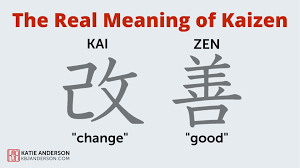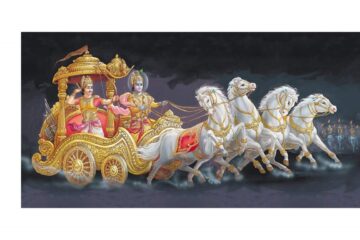Well, ever since Vineet Nayar brought up this radical philosophy of Employee First Customer Second in 2005, he has been acknowledged as a revolutionary thought leader globally. The ideology has been accepted by many organisations and has formed a part of the core values and culture that drives them. The idea drew many eyeballs quite certainly because of the second half of the philosophy.
Traditional managements would always have the customer as a priority as an existential requirement for the existence and growth of the organisation and would rather expect the employee to consider that as well. As the old adage goes, the customer is the king! So one would reasonably want to ask, where does this thought come from and more so how do we fit it within the organisation.
Surely managements would want to believe to keep the customer first, organisation second and then the employee. Even though the employee is important and so many employee based interventions are on the run around us, the whole thought of employee first and customer second doesn’t simply gel with the rational line of thought.
What is Employee First – Ok, so organisations anyways want their employees to be happy but the pre-condition is that they are productive and effective and adhere to the workplace protocols. The famous McGregor X theory believed otherwise, that employees do not come to the workplace to work but only to earn a livelihood and hence the stick is the way to get work done through them. Herzberg also professed that motivators turn into hygiene in disappointingly short time.
Mc Gregor Y theory although said that people do want to enjoy their work but just need a conducive environment to facilitate working. A McKinsey report also says that employees stay longer in the company where they find a challenge in their work.
In the light of the above, the philosophy of ’employees first’ just fits in perfectly. If your customers are happy it will certainly mean increasing business volumes for the organisation. But the revolutionary way yet basic business common sense is to keep your employees engaged and acknowledged so as they keep the customers satisfied.
Employee first means to keep the employee a priority. The methods can be those enlisting intrinsic motivation viz., recognition, appreciation, basic human respect, acknowledging good work, a space to allow failure and related learning and development, treating a human as a human and not a machine and so many more organic ways of motivation, not to forget rewarding good work with material incentives.
Conditions applied* – Although the caveat here is that it is not the responsibility of the organisation to keep the employee happy or satisfied with their job!
No one can ever be made happy with material incentives and perks as well as by giving the privilege of allowing the shortcomings of people beyond a point. This is not what employees first means. Job profile requirements and office and work protocols are sacrosanct, even within employee first culture. Extrinsic motivation just doesn’t help in happiness except for the short term and organisations don’t strategise for short term. Doling out privileges in the name of employee first will not only spoil the culture but also the individual capacity of the employee as the theory social determination says.
How Employees First Works – Employees, when they are treated at a human level would get the space to communicate freely both ways, be creative, be bold and take the tough decisions when required and most importantly take the ownership of the task and be accountable towards their work and the organisational growth.
The leaders work in the inverted pyramid and come forward to support their team and give them the necessary bandwidth to delegate their tasks to the team instead of the traditional hovering helicopter micro-management. Checks and balances are clearly communicated and so the discipline of a game is ensured and everyone enjoys playing the game.
At first this might look like a skill to be developed by the leader but with the right attitude to serve with a larger vantage point, things take a paradigm shift for the better sooner than later.
Customers second – Customers are always first. Customers second is symbolic not literal. You cannot afford to lose or dissatisfy a customer in the name of employee first. Just like the Gandhian concepts, the essence and reasons of such philosophies have to be captured, not just conveniently the words. The customers surely must be made aware, clearly, that our employees are not your stress reducing punching bags. Employees need to serve the clients, sometimes need to go an extra mile as well for a wow customer experience but the customer surely cannot expect the employee to come walking on their knees to make them happy! A happy customer sustains the organisation as much as a happy employee does. A happy customer is the best marketing agent for the organisation as well, and that too for free !!
Mindset issues for large scale implementation – That being said, as seen in many cases around in organisations following the employee first policy, the employees seem to take the ‘employee first’ philosophy too much literally and for granted. They want all their rights as if they are given some special reservations and are not sincerely committed towards what they are supposed to bring on the table. A compromised quality of work without significant check points can bring the organisation fall down flat.
It leaves a bad precedent in the market as well. Although a noble and fair model as it surely is, organisations today are wary to adopt this because of its shortcomings. After all once the organisation has mentioned employees first, customers second as their core value and integrated it in their culture, it is hard to retract from there inspite of its shortcomings and more so harms.
Leadership’s vantage point – In the wake of the pressure of retaining good workforce, it is important to acknowledge the human within the employee. Newer organic ways are required to be brought in on the table rather that the carrot and stick list used by the crowd. Hence to respect the employee more than the customer is quite relevant, not from the vantage point of desperate need but from the high point of a win-win for both the employee and the organisation.
Employee first, customer second is a great thought in essence but one may have to put a thought to whether this should form a part of the organisational core values, as in spoken aloud or be a discreet culture and hence no one is claiming their rights and/ or keeping their customers at bay. Everyone knows that they will be appreciated, respected and listened to but work is a priority in line with organisational needs. There need to be wise filters applied by astute and able minds as we go and take the leap of faith and make it a part of our organisational culture hoping rationally for a great future for all parties at stake !!
As they say, desperate times……!



0 Comments